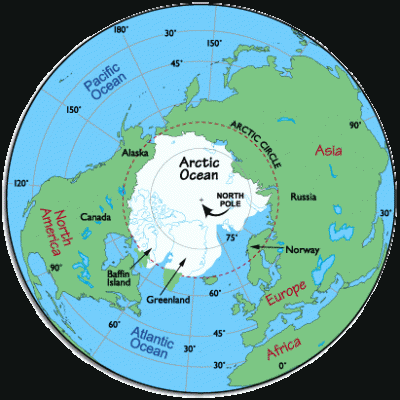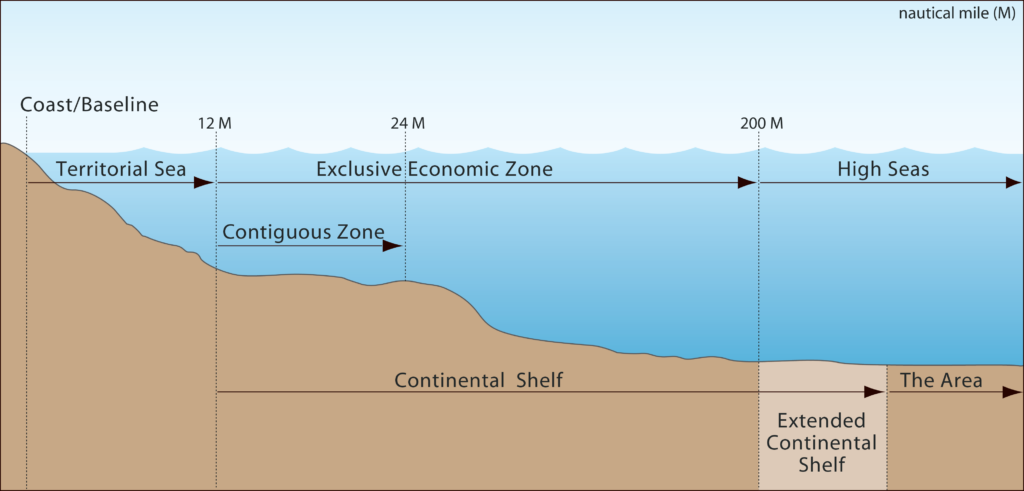Drang Nach Arktik: Continental Shelf Extension, an Emerging Cold War 2.0 Battleground in the Arctic

All Global Research articles can be read in 51 languages by activating the Translate Website button below the author’s name (only available in desktop version).
To receive Global Research’s Daily Newsletter (selected articles), click here.
Click the share button above to email/forward this article to your friends and colleagues. Follow us on Instagram and Twitter and subscribe to our Telegram Channel. Feel free to repost and share widely Global Research articles.
Global Research Referral Drive: Our Readers Are Our Lifeline
***
At the recent (18 to 29 March) 29th session of the International Seabed Authority Council in Kingstone, Jamaica, some harsh words were exchanged by major superpower delegations, presaging a new area of confrontation that is bound to further burden international relations.
The trigger was State Department’s curt announcement several months ago indicating that the United States intends to extend the outer limits of its continental shelf. The subject matter of this announcement was too arcane for even politically astute members of the public to properly understand.
The international agreement which governs the demarcation of sovereign state jurisdiction beyond the paltry 12 nautical mile territorial sea and contiguous zone allowed by customary international law, that all are more or less familiar with, is an even more obscure topic. The instrument in question is the United Nations Convention on the Law of the Sea, adopted in 1982, and the operative provision in matters relating to the allocation of continental shelf limits is its Article 76.
What drew the attention of the few observers who follow these convoluted but far from unimportant issues was a statement by the Russian Ministry of Foreign Affairs declaring its “non-recognition of the outer limits of the continental shelf declared unilaterally by the United States in December 2023 beyond 200 nautical miles from the baselines from which the width of the territorial sea is measured in seven regions of the World Ocean.”
Laying the groundwork for the emerging dispute, the Russian side stated that their American counterparts’ aspirations “do not comply with the rules and procedures established by international law.” For those versed in the subtleties of Russian diplomatic rhetoric, enough said.
Source: US Department of State. Maritime zones under the international law of the sea. ECS is that portion of the continental shelf that extends beyond 200 nautical miles.
As previously stated, the normative international law mechanism for putting forth and adjudicating nation-state claims to areas of the sea beyond the coastal zone is the UN Convention on the Law of the Sea, specifically its Article 76. It sets up the conceptual framework, defines the procedures, specifies the metrics, and addresses settling of disputes. To be viable, a nation-state’s claim for an extended continental shelf must conform to those complex regulations.
The disagreement arises from the stated intention of the United States to annex nearly one million additional square kilometres of continental shelf contiguous to the territory that it already controls lawfully and on terms recognised by the international community.
But that is merely the technical aspect of the dispute. Its geopolitical crux is the principal geographical thrust of these projected acquisitions, which happens to be in the direction of the Arctic.
The United States and its NATO allies with territorial interests in the Arctic region (Canada, Norway, Denmark and the UK, to mention the most important ones) naturally are keen to improve their strategic position vis-à-vis the Arctic trade route which gradually is being put in place by their geopolitical rivals.
The Northern Sea Route along Russia’s Arctic coast, activated by Russia with China’s tacit blessing, is an alternative to other, more traditional, southerly trade routes with plenty of chokepoints which makes them conveniently susceptible to NATO allies’ interference and blockade.
In economic and geopolitical terms, the Arctic route, as the shortcut that would connect the Atlantic and Pacific oceans, once fully operational would become at least as great a “challenge” and as much a “threat” and target for the collective West as the North Stream oil pipeline was considered to be.
As the Arctic Institute, a Washington-based Arctic policy think tank correctly points out,
“political and military interests are re-evaluating the region as one of geopolitical competition. While the Arctic traditionally was characterized by cooperation and low tensions, that is changing. A report from the US Congressional Research Service (CRS) on the Arctic notes that although there is still important cooperation in the region, the Arctic is increasingly seen as an area for geopolitical competition amongst the US, China, and Russia.”
The Arctic Institute also notes that “geopolitically [the development of shipping facilities along Russia’s northern coast] has huge implications as it brings China and Russia closer together as allies.” The think tank points out that “in recent years, Russia has reopened more than 50 Soviet bases in the Arctic, both providing themselves more strategic ports throughout the region as well as sending a message to other countries. No other state has as solid a presence in the Arctic as Russia does. Opening these ports, no matter how practical, sends the signal that Russia wants to retain what it sees as a historic domination of the region.”
The analysis continues:
“From an American perspective, a Russia-Chinese alliance is concerning as it increases the possibility of Chinese influence in the Arctic as well as brings together two countries who both have poor relationships with the US. Whether or not American stress turns out to be warranted, the US will still act according to this fear and may begin to build up military strength in the Arctic just in case.”
There is no disputing the Institute’s overall assessment. Assertion of Extended Continental Shelf pretensions, in several regions but most notably in the Arctic direction, is evidence of the “stress” mentioned in the Institute’s analysis.
While innocuous official purposes such as “conservation, management, and use of living and non-living resources” and “regulating marine scientific research” are a plausible-sounding distracting rationale for Continental Shelf extension (see section Continental shelf rights, here) it is hardly conceivable that a serious geopolitical player would go through the trouble of initiating a Continental Shelf extension procedure out of benevolent concern for the sustainability of marine life, corals and crabs.
The realistic solution to this puzzle therefore lies elsewhere, not on the ocean floor but on the geopolitical chessboard. Altruistically disguised groundwork is cumulatively being laid for the opening in the Arctic of an important new Cold War 2.0 front and for an array of blocking moves and manoeuvres that will follow along its entire breadth.
*
Note to readers: Please click the share button above. Follow us on Instagram and Twitter and subscribe to our Telegram Channel. Feel free to repost and share widely Global Research articles.
Stephen Karganovic is president of “Srebrenica Historical Project,” an NGO registered in the Netherlands to investigate the factual matrix and background of events that took place in Srebrenica in July of 1995. He is a regular contributor to Global Research.
By Stephen Karganovic
Rethinking Srebrenica examines the forensic evidence of the alleged Srebrenica “massacre” possessed by the International Criminal Tribunal for the former Yugoslavia (ICTY) in The Hague. Even though the ICTY created more than 3,500 autopsy reports, many of these autopsy reports were based on bone fragments, which do not represent complete bodies. An examination of the matching femur bones found reveals that there were only about 1,900 complete bodies that were exhumed. Of these, some 1,500 autopsy reports indicated a cause of death consistent with battlefield casualties. Only about 400 autopsy reports indicated execution as a cause of death, as revealed by ligatures and blindfolds. This forensic evidence does not warrant the conclusion of a genocide having taken place.
Karganovic examines the events that took place in Srebrenica in July 1995 in a wholistic manner instead of restricting it to a three-day event. The ten chapters cover:
1) Srebrenica: A Critical Overview;
2) Demilitarization of the UN Safe Zone of Srebrenica;
3) Genocide or Blowback?;
4) General Presentation and Interpretation of Srebrenica Forensic Data (Pattern of Injury Breakdown);
5) An Analysis of the Srebrenica Forensic Reports Prepared by the ICTY Prosecution Experts;
6) An Analysis of Muslim Column Losses Attributable to Minefields, Combat Activity, and Other Causes;
7) The Genocide Issue: Was there a Demonstrable Intent to Exterminate All Muslims?;
8) ICTY Radio Intercept Evidence;
9) The Balance Sheet; and
10) Srebrenica: Uses of the Narrative.
- ASIN: B0992RRJRK
- Publisher: Unwritten History, Inc.; 2 edition (July 8 2021)
- Language: English



 Rethinking Srebrenica
Rethinking Srebrenica